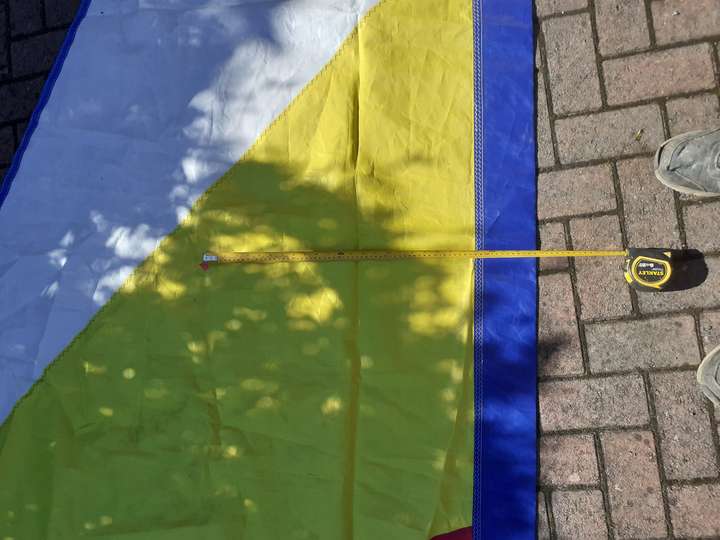Blue Peter Dinghy - Checking mast step position

The mast step was loose. I fixed it.... The problem was the hole it had worn through the fibreglass was substantial and the difference to the angle of the mast at the two extremes substantial. I did a lot of measuring and comparing with photos sailing before setting it, but have since decided that it may or not be correct, but I'd like to know.
In retrospect this could very well account for my son struggling to keep a course with this little boat... hopefully I fix it and he falls in love with sailing a pleasant well behaved boat! In fact, I'm pretty sure a couple of people tried to tell me about this issue, but, my head wasn't in a place that I was able to process what they were saying correctly. It seems it now might be.... or getting there!
To establish this, I did some reading and discovered the impact of a mast being tilted the wrong way - it moves the centre of pressure of the sail(s) relative to the centre of lateral resistance (of the hull). It all can be summarised as;
When the COP is too far back, the tiller is heavy to move and more deflection is needed to keep the boat on course when not heading downwind. When the COP is too far forward, the boat will keep trying to turn downwind rather than upwind when left to its own devices. (If it's easier read COP as mast head)
Note. I use COP in my statements because for an existing dinghy, one cannot move the CLR other than by shifting crew weight around. If we presume that we want the boat flat at all times, then this isn't a variable. Therefore COP is the sole variable and can be directly moved forward or backward by tilting the mast forward or backward... okay, technically, we could move the entire mast, but to do this, we'd be altering the boat.
How will I achieve the optimal position?
Firstly, I have located the centre of effort (middle) of the two sails that I have. Both show the centre point lying around 580mm behind the mast. In both sails, it is circa 1280mm above the boom. This means that once I know the CLR of the boat, I can see where they lie relative to each other, and, better yet, calculate how every 10mm (or less) of mast step movement aft or forward will impact on the relationship between them. :-)
N.B. The sails were measured unstretched, but, presuming the fabric stretches evenly across its length and breadth when tensioned, the COE shouldn't move too much.
I have measured the mast step that the mast cup (as in a Topper) sits in. It allows for 17mm maximum movement fore and aft.
| Mast Height | 4670mm |
| Mast gate Height | 360mm |
| COE Height above Mast gate | 1710mm |
By my calculations, using trigonometry (Sinθ=opposite / hypotenuse), there is 1.12° of movement in the mast rake forward and backwards of centre
If we use the same formula backwards, we can project that the the head of the mast (4310mm above the gate), the mast will move a total of 180mm (90mm forward and back of centre).
At the height of Centre of Effort for the sail (1710mm above the gate), it will move less, being closer to the pivot - 71mm (36mm either side of centre).
This doesn't sound a lot, but from experience in sailing with it wrong, fully forward is very wrong. Presumably the sweet spot will be in the centre of the mast step and thus our movement.
Locating the CLR is the next challenge. Theoretically the boat will be kept level, but when someone heavy is in the boat, it does not sit level (cannot short of laying along the boat), so, CLR will likely alter and this is where the rake adjustment might be most useful.
Another way of moving the COE forward will be to add a jib. This may be a simpler option with potential for far greater movement, but, I'd have to strengthen the forward gunnel and or add a removable bowsprit to facilitate this. To avoid the bowsprit (the jib would be very very small), a genoa could be fitted instead (jib that extends behind the mast).



